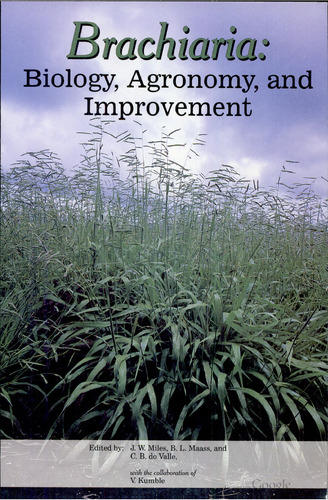Reproductive physiology, seed production, and seed quality of Brachiaria
Seed of six commercial Brachiaria species is extensively produced for pasture sowing. Production is restricted geographically and seasonally by photoperiodic flowering reactions. It also requires a prior control of vegetative tiller production, and therefore a reliable dry season. The necessary conditions are most readily found at high tropical latitudes. Seed crop management is mostly conventional. Vigorous synchronized tillering is stimulated by decapitation and use of nitrogenous fertilizer at times when rainfall, temperature, and sunshine are expected to favor unrestricted development. Ripe seed sheds readily and, coupled with imperfect synchronization of crop ripening, tends to make conventional direct harvesting inefficient and its timing critical- Where possible, seeds are let to fall and accumulate, and then recovered. Seed yields range from more than 1,000 kg/ha of pure seed to less than 100 kg/ha. Seed quality is heavily influenced by vitality and dormancy Vitality depends mostly on maturity of seed at harvest, being higher in accumulated fallen seed and much lower in directly severed seed. Dormancy is strongly developed in the genus and persists in most taxa at least into the season after harvest. This creates problems for germination testing and in the field use of fresh seed. Breaching the husk, most commonly by sulfuric acid, provides a partial solution. Suggestions are offered for improving seed production when developing new cultivars, particularly for selecting flowering control mechanisms compatible with production at low latitudes.

